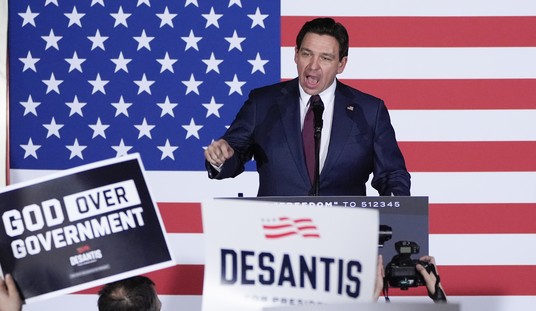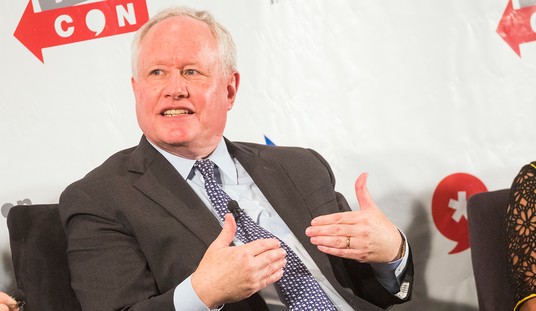Lotta hype for this Change Research data on political Twitter this morning, and understandably so. If this really is where things stand in swing states right now, Trump is within striking distance of reelection. At first glance it certainly backs up Don Lemon’s contention that the rioting in Portland, Kenosha, and elsewhere has begun to show up in the data.
Arizona: Biden 49%, Trump 47%
Florida: Biden 49%, Trump 46%
Michigan: Biden 50%, Trump 44%
North Carolina: Biden 48%, Trump 47%
Pennsylvania: Biden 49%, Trump 46%
Wisconsin: Biden 49%, Trump 44%
If Trump gets a bounce from the convention and Biden has a bad debate, especially the much-watched first debate, we have ourselves an electoral toss-up. Again, if Change’s data is accurate.
What’s interesting about these numbers, though, is that they don’t actually show the race tightening. It’s been tight, according to Change Research. Remember this post from last month? Most pollsters have Biden ahead comfortably in most swing states, which is why CR’s numbers seem so jarring at first glance. Trump is closing in! But in reality — and strangely, for a firm aligned with the other party — Change has had better battleground numbers lately for Trump than most of the rest of the field has. Compare their data last month to this new data and you’ll find that Biden’s actually … gained slightly in some states:

Florida has tightened up, which is important, but it’s status quo everywhere else. Biden’s national lead is slightly bigger now than it was in July. So are the riots really showing up in the polling? There’s no question that the BLM protests in June pushed Biden up to a daunting advantage nationally but that lead slipped throughout July. He was outpolling Trump by 10.2 points in RCP’s average in late June; by August 5, that had slipped to 6.4 points. Since then, despite the attention paid to Portland’s endless violence, he’s actually climbed back up to lead by 7.7 points. It’s the disappearance of the protests from the public’s radar more so than a growing backlash to the violence, I think, that’s cost him his a few points.
But that may change. A lot is in flux at the moment — the GOP is making its case to voters on national TV, news of the Kenosha rioting is starting to percolate, COVID has eased in most of this summer’s hot-spot states. The most interesting and possibly significant finding in Change’s data has to do with that:
Nationally, 71% have serious concerns about COVID-19, unchanged from two weeks ago, 42% approve of the job Trump is doing handling COVID-19, unchanged from two weeks ago, and his overall job performance was stable at 45%. In the battleground, serious concerns about COVID-19 ticked down 4 points, approval of Trump’s handling of COVID-19 rose 3 points to 47% (the highest it has been since May 17 when it was 49%), and his overall job performance rating rose 2 points to 48%.
Slowing community spread in Florida may explain why some voters have come back to Trump there. Although, if that’s the case, it’s weird that the same thing isn’t happening in Arizona, where cases have dropped significantly.
Long story short: Of the six states polled by Change, the RCP average has Biden doing better in five of them than Change does. (North Carolina is the exception.) Although in some cases, notably Florida and Arizona, it’s only the tiniest bit better. Those states had seen some extremely discouraging polling for Trump during his June swoon but there’s now every reason to believe they’re winnable again.
This Frank Luntz tweet is making the rounds today too but it’s misleading in a bunch of ways:
Swing state polls on August 25th:
Pennsylvania
• 2016: Hillary +9.2
• 2020: Biden +5.7Michigan
• 2016: Hillary +9.0
• 2020: Biden +6.7Wisconsin
• 2016: Hillary +11.5
• 2020: Biden +6.5Florida
• 2016: Hillary +2.9
• 2020: Biden +4.8👉🏻 https://t.co/oJFSBQcvK3 https://t.co/7DibWSRCSb
— Frank Luntz (@FrankLuntz) August 25, 2020
It’s true that Hillary had a bigger lead at this stage in 2016 than Biden has now but remember that the 2016 race was volatile whereas this year’s race has been freakishly stable. Hillary got a huge month-long bounce out of the Democratic convention at the end of July that year — then watched her lead collapse to less than a point by mid-September. That’s what you’d expect in a “choice election,” where voters find things to like and dislike in both candidates.
Biden, meanwhile, seems to have gotten no bounce from the Democrats’ Zoom convention but he’s also never had a stumble like that. Since becoming the presumptive nominee, he’s led Trump by 4.4 points or better every day of the race and has frequently led in the range of six to eight points. And Biden’s ceiling is higher than Clinton’s was. Apart from a few days before Trump clinched the GOP nomination, she never averaged 50 percent against him. Biden has been hovering around 50 percent for weeks. He was at 50.1 percent two days ago. That’s what you’d expect in a “referendum election,” where voters are really just weighing whether they can tolerate another four years of the incumbent. The pendulum doesn’t swing as much because their views of Trump, for the most part, are firm after three and a half years.
This is an important point too. Whether pollsters have gotten it right or not this year won’t be known until November 3, but after the shock of 2016, they’re at least *trying* to get it right by not undercounting Trump’s white working-class base again:
Some critical context: the 2016 polls were not weighted for non-college education as the 2020 polls are and also, less undecided nows
— Rachel “The Doc” Bitecofer 📈🔭🍌 (@RachelBitecofer) August 25, 2020
The polls shouldn’t miss “shy Trumpers” this year to the same degree they did four years ago. Which means the impressive leads Clinton had at this point in 2016 may have been something of a mirage, more so than the slightly less impressive leads Biden enjoys at the moment. Plus, Nate Silver notes that some of the polls taken lately, which have been mediocre by Biden standards, are of lower quality than live-interview polls. Our best sense of the race as it actually stands will come next week, after the GOP convention, when the prestige pollsters begin taking the country’s temperature again. This little two-week vacation from reality that the country enjoys every four years during the conventions is fun but it’s daily life in September and October that’ll decide who wins. If the virus remains off-peak, the economy keeps climbing back, and Democrats continue to cower from the woke brigades instead of denouncing riots, Trump’s got a good chance to win. If a “second wave” hits, the stimulus talks fail, and Democrats have an epiphany that arson and looting are bad, he’s finished.
One more fascinating data point from Change Research:
When we last surveyed, 38% of battleground voters and 36% nationally expressed their intention to vote by mail in the upcoming election. Since then, very serious news about changes to the USPS, including the removal of mail sorting machines and mailboxes, has come to light. Voters have become less inclined to vote by mail as a result. Presently, 33% of voters nationally and in the battleground intend to vote by mail. Democrats, the group most likely to say that they intend to vote by mail, shifted the most over the past two weeks: 51% of Democrats nationally intend to vote by mail, down 11 points, and 57% of Democrats in the battleground intend to vote by mail, down 7 points.
That’s good news for Trump if those voters have now been discouraged from voting at all, but that’s unlikely. If instead it simply means that they’re going to vote in person, whether early or on Election Day, then it actually weakens the argument he’s lined up that he was cheated by mail-in ballots if he loses. I suspect Democrats are going to go full throttle in October on getting people to vote early *in person* for precisely that reason. He’ll claim he was cheated no matter what because that’s who he is, but the less persuasive that argument is, the less he can leverage it. Dems can make it less persuasive by turning out in person.








Join the conversation as a VIP Member